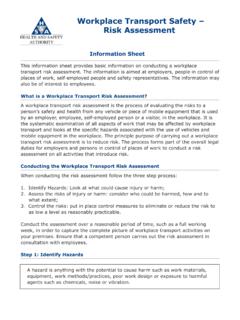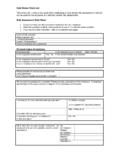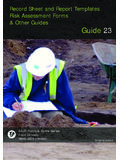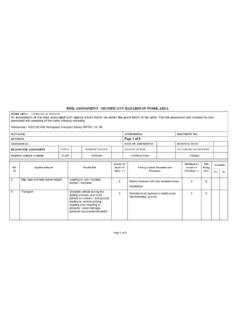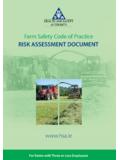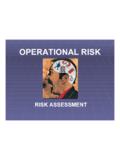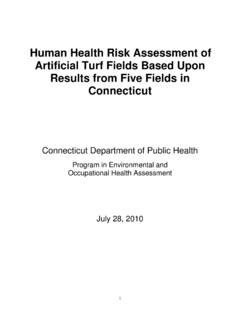Transcription of Management of risk when planning work: The right priorities
1 Leadership and worker involvement toolkitManagement of risk when planning work : The right priorities Checklist from Seven steps > Step 3 > Further tools > risks should be reduced to the lowest reasonably practicable level by taking preventative measures, in order of priority. The table below sets out an ideal order to follow when planning to reduce risk from construction activities. Consider the headings in the order shown, do not simply jump to the easiest control measure to ) Redesign the job or substitute a substance so that the hazard is removed or eliminated. For example, dutyholders must avoid working at height where they ) Replace the material or process with a less hazardous one.
2 For example, use a small MEWP to access work at height instead of step ladders. Care should be taken to ensure the alternative is safer than the controls3) Use work equipment or other measures to prevent falls where you cannot avoid working at height. Install or use additional machinery such as local exhaust ventilation to control risks from dust or fume. Separate the hazard from operators by methods such as enclosing or guarding dangerous items of machinery/equipment. Give priority to measures which protect collectively over individual controls4) These are all about identifying and implementing the procedures you need to work safely. For example: reducing the time workers are exposed to hazards (eg by job rotation); prohibiting use of mobile phones in hazardous areas; increasing safety signage, and performing risk protective 5) clothes and equipmentOnly after all the previous measures have been tried and found ineffective in controlling risks to a reasonably practicable level, must personal protective equipment (PPE) be used.
3 For example, where you cannot eliminate the risk of a fall, use work equipment or other measures to minimise the distance and consequences of a fall (should one occur). If chosen, PPE should be selected and fitted by the person who uses it. Workers must be trained in the function and limitation of each item of Leadership and Worker Involvement toolkit is aimed particularly at small and medium sized businesses and is designed to help improve your health and safety and bring additional benefits to your business performance and by the construction industry s Leadership and Worker Engagement Forum. Hosted by HSE 11/11It is not necessary to implement every measure.
4 For example, in the case of a fully boarded and guarded scaffold, workers would not be expected to wear personal fall-arrest further information see.










